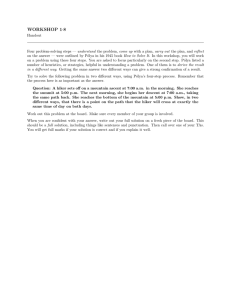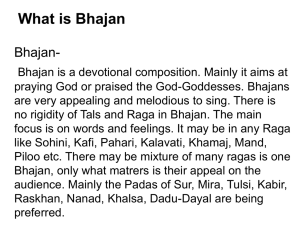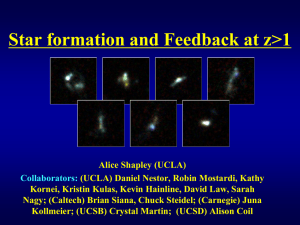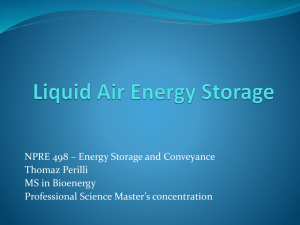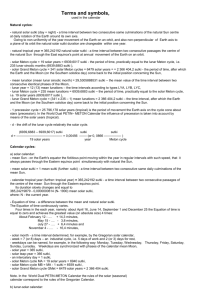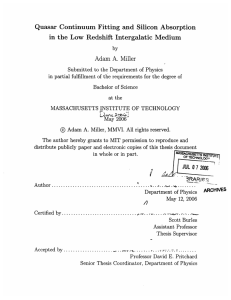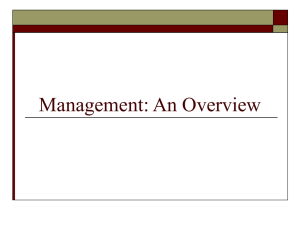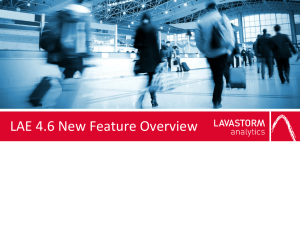Accelerated Evolution of Lya LF at z>7 and the Physical Pictures
advertisement
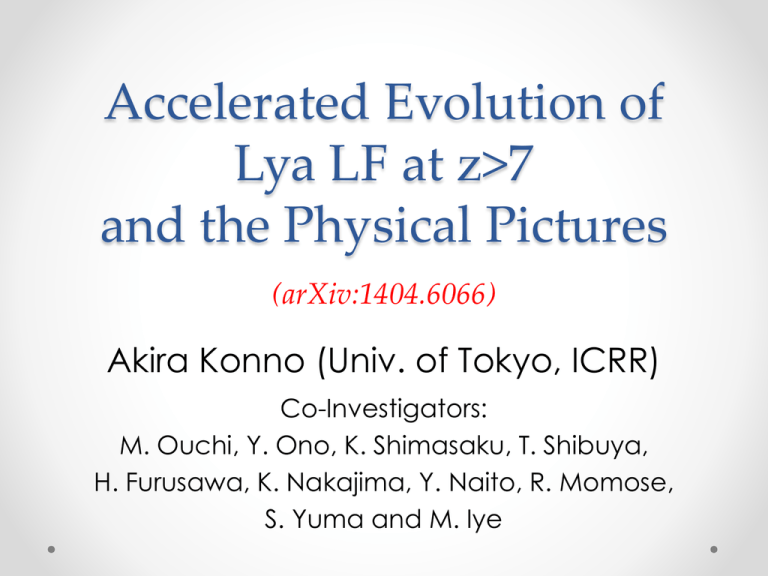
Accelerated Evolution of Lya LF at z>7 and the Physical Pictures (arXiv:1404.6066) Akira Konno (Univ. of Tokyo, ICRR) Co-Investigators: M. Ouchi, Y. Ono, K. Shimasaku, T. Shibuya, H. Furusawa, K. Nakajima, Y. Naito, R. Momose, S. Yuma and M. Iye this single line emitter, due to the limited spectral reso to-noise ratio of LRIS data (< 5σ). We find that othe no emission line down to the flux limit indicated from t These candidates are probably objects with a red con Ouchi+ 10 2 3456!( -!, L1 Shibuya+ 12 z~7.3 (Hibon,Tilvi, Krug) z=6.6 ? z~7.3 (Ota, Shibuya) z=5.7 @Neutral ( 3-., L!H., 4*#&!WCG%F Fraction x(HI) WCG%F!4, &!>( !( )*; Introduction CMB LAE/ GRB QSO Redshift • Lya LF evolves from z=6.6 or not ? • B( N)56a • PQR1S!TJ U)!)-3N?!4, &!4#& &( 3-., L!5?N.#+( &!E., 4*# Sharp or ⇒ z=7.3 LAE survey address these6LL!45, issues.&+( !>( 4, 3 • T?V!TH!I Figure 1: (Left) Evolution of xHI (Ouchi et al. 2010). D Lyaevolution damping absorption HI in IGM ofwing xHI for the mini,ofsmall, and large halo cas solid linepre sentsthedoublere ionization extended reionization history ? scenario (Cen spectrum of theconfirmed z = 7.2 LAEswith a significa Subaru/S-Cam NB101 Obs. Konno+ 14 1) NB101 … more sensitive to line emission than NB1006 2) Total exp. time : 106 hrs … Ultra-deep survey ⇒ Detect very faint LAEs at z=7.3 • 5-sigma limiting L(Lya) = 2.4 x 1042 erg/s … comparable with z=3-6 LAE survey … ~4x deeper than Subaru z~7.3 survey z=7.3 LAE sample 2) • Field … SXDS and COSMOS (Total : ~0.5 deg A E L αL F z 7 CCELERATED VOLUTION OF Y UMINOSITY UNCTION AT • SXDS : 3 LAEs • COSMOS : 4LAEs … Total : 7 LAEs • Expect ~65 LAEs in case of no evolution from z=6.6. Konno+ 14 Figure 4. Snapshots of our z = 7.3 LAE candidates. The size of each image is 6 × 6 . North is up and east is to the left. candidates in Table 2. The total magnitudes listed in Table 2 are obtained by the aperture-correction technique explained in sensitivity for a Lyα emission line. Thus, the reason for detection of SXDS-NB1006-2 is clear, while the reason Evolution of Lya LF at z=6.6-7.3 Inner : 68% CL Outer : 90% CL z=5.7 (Ouchi+ 08) z=6.6 z=6.6 (Ouchi+ 10) z=7.3 (This Study) Konno+ 14 (Ouchi+ 10) z=7.3 (This Study) Konno+ 14 • Conclude that Lya LF decrease from z=6.6 to 7.3 at >90% confidence level. ( Shown by previous studies ; e.g. Clement+12 ) Ellis+ 13 Bouwens+14 Ouchi +08, 10 This Study UV luminosity density Lya luminosity density Accelerated Evolution of Lya LF Konno+ 14 arXiv:1404.6066 • Evolution of Lya LF is accelerated at z>7. • No such rapid decrease of UV LF at z~7, but only for z~8. • Different from a pure SFR decrease but related to Lya escape + production and/or cosmic reionization Imprecations from Lya LF Evolution • x(HI) = 0.3-0.8 Model A … consistent with previous studies • Compare our x(HI) with CMB results using theoretical models. • Our x(HI) → Model A & B … inconsistent with CMB results • WMAP result → Model C … x(HI) is higher than Model C • A tension between our x(HI) and CMB results ? o Clumpy HI clouds (Bolton & Haehnelt 2013) o Increase of f_esc of LyC (Dijkstra+ 2014) Konno+ 14 Model B Model C Choudhury+08 models Summary • Ultra-deep Subaru/S-Cam NB101 imaging survey allow us to detect very faint z=7.3 LAEs. o L(Lya) = 2.4 x 1042 erg/s … comparable with z=3-6 survey … ~4x deeper than z~7.3 survey (1) Evolution of Lya LF at z=6.6-7.3 at >90% CL (2) Accelerated evolution of Lya LF beyond z=7 • There is a tension between our x(HI) = 0.3 - 0.8 and CMB results ? o Support new physical pictures • high-z LAE survey with HSC → PFS, JWST, TMT etc…
